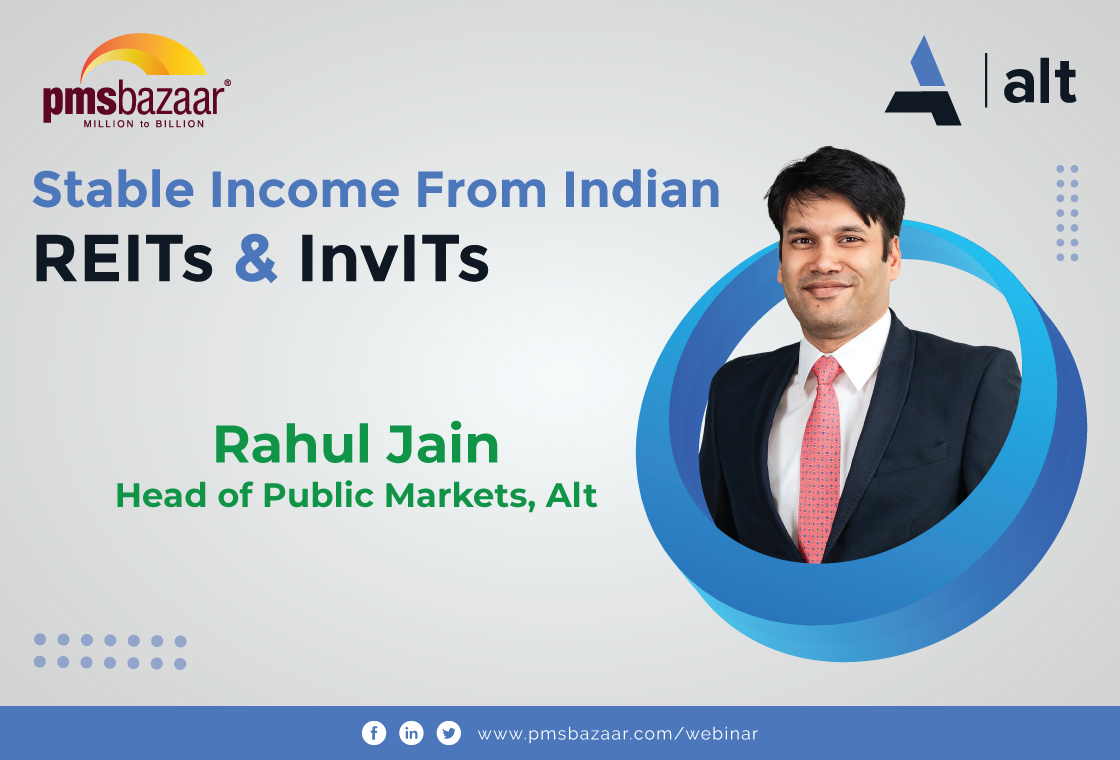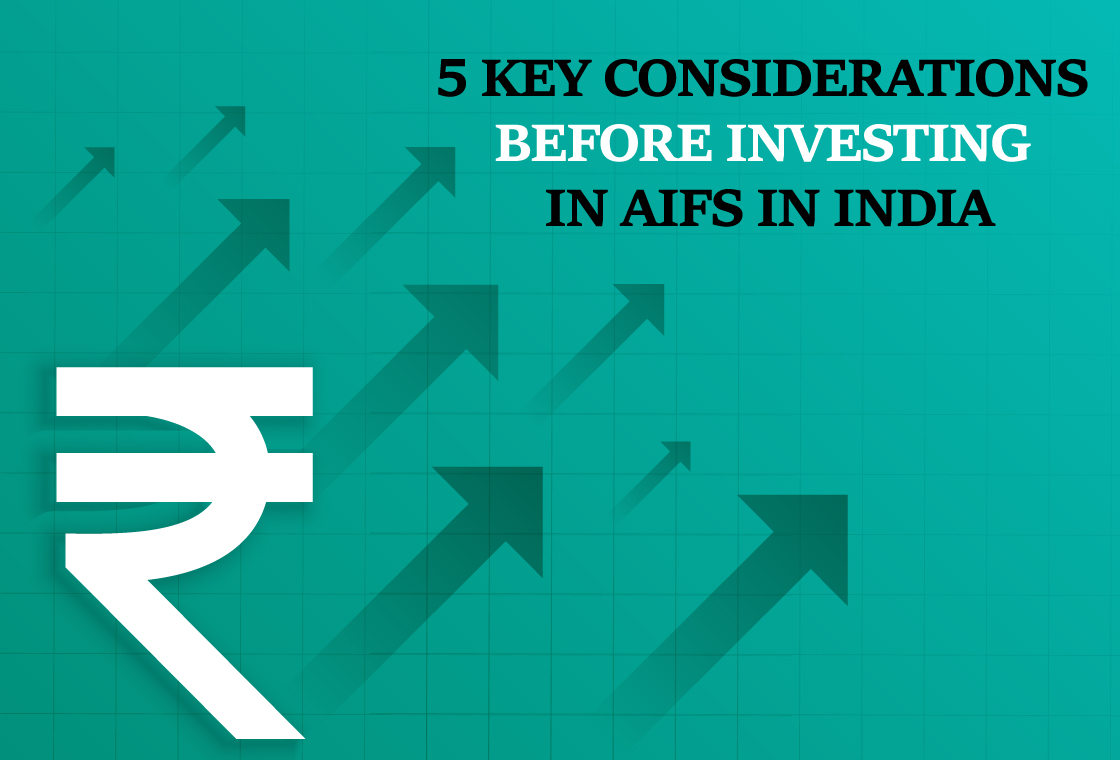Stock markets are volatile by nature which tends to make investors nervous about their exposure to one asset class, especially equity. To get your asset allocation formula right at all times, investors need to understand their risk appetite and choose the right strategy to build wealth in the long term. Dynamically managing asset allocation adjusts the mix of asset classes to suit the given market scenario. Based on the topic of Dynamic Asset Allocation, PMS Bazzar conducted a webinar, and this blog would discuss key insights discussed in the webinar, and how Dynamic Asset Allocation is an active part of fund management to respond to the changing market conditions on an ongoing basis.

In this interesting webinar, Mr. Siddharth Vora, Fund Manager & Head Quant Investment Strategies - PMS, Prabhudas Lilladher, discussed dynamic asset allocation and why that is the smartest way to navigate volatility on the upside and the downside.
Key Insights from the webinar covered in this blog are:
- How to manage multiple risks and control volatility through portfolio strategies
- Inflation, stagflation, and valuation
- How do you move asset class and risk based on the different cycles?
- Eliminating risks through passive and dynamic investment
How do you manage the multiple risks and control the volatility through portfolio strategies?
Risks are usually external in terms of macro monetary inflation geopolitical, but volatility is internal to the portfolio, so our job as fund managers is to manage these risks and control the volatility. If we look at what's happened in the world year to date across asset classes, it appears extremely evident that whether it is government bonds or corporate bonds, it has been an extremely hard year. All the assets have given up a lot of the returns made in the last two years and there is a very clear trend that equity indices and risk-on assets are out of favor today. Why this is happening and how to deal with it?
To begin with, the Fed's balance sheet had nearly doubled as a result of COVID. Trillion dollars, which is a record high, and managing that amount of debt is incredibly difficult. To manage it, we've gone through a quantitative easing cycle, tapering, and now we're actually on the edge of tightening, and tightening is just getting started. When we go into a rate hike cycle many spillover impacts can be clearly visible.
For example, as borrowing costs rise, corporate earnings are compressed, and a combination of these factors can be seen in contracting PE multiples. This is because as your discounting cost to your discounting factor rises, the first impact is on PE multiples, and this is a double setback because inflation is hitting margins and thus compressing earnings, and we are seeing rate hikes, which will also hit multiples, so it's a double whammy.
Inflation, Reinflation and Stagflation
If we look at some of the emerging themes globally, the concern was around inflation and reflation, and as we stand in 2022, the talk is more about stagflation. Stagflation is basically a combination of slowing economic growth and rising inflation, and this is an extremely rare phenomenon that has only happened a couple of times in history so far.
Furthermore, if we look at how the IMF is forecasting the world to move forward, we can see that across the board, whether it's emerging economies or advanced developed economies, they've slashed GDP forecasts, implying that growth is a concern, while simultaneously increasing their inflation forecast. For example, for 23 inflation forecasts have been revised from 4.8 to 6.5 for emerging economies, while GDP forecasts have been cut from say 4.7 As a result, we are dealing with a challenging macroeconomic and monetary combination.
Valuation and Navigation
Another factor that we need to understand in terms of the risks that are building up in the system is valuation. Given the flux of liquidity that we saw post-COVID, a lot of growth stocks and momentum stocks did really well, and overall risk-on assets performed very well over the last six months. What we've started noticing is that valuations and value as a factor in investing have started to become relevant all over again, and we must be able to decipher not just how the macro and monetary regimes are evolving but also how to be conscious of the valuation front.
We can't pay too much for an asset whose earnings may compress or the discounting rate may rise, causing the multiples we give to those earnings to collapse. Even in Indian markets, crude has a negative impact on GDP growth, inflation, and current account deficits, so what we've gathered here is that every 10% increase in oil prices shaves off 2%of GDP distorts the currency, the current account balance by point three percent and increases in inflation by forty basis points. So as of now, we are in a crude rise environment and we need to be aware of these risks also.
Apart from that, a weaker INR will result in higher important input costs and higher imported inflation, putting more pressure on companies and businesses that rely on imported raw materials or commodities in general. Finally, commodity inflation is at historic highs right now, with no signs of reversing. This is likely due to a combination of geopolitical tensions in Russia and Ukraine at the moment. As a result, it's critical to understand how to really move forward through these cycles, as well as what the correct balance of assets is to help us navigate.
How do you move asset class and risk based on the different cycles?
Right now, we're looking at monetary tightening in the short term, which means interest rates are going up, and thus a clear focus on risk. If you're an equities investor, you need to be concerned about inflation proofing. In terms of allocation, overnight money market funds and short-term money market funds are the best options.
We have come from a cyclical boom and debt instruments have become quite important in the portfolio. Basically, we're in the recuperation period right now, and we'll be here for a while. As a result, the asset mix should be skewed towards inflation monetary market proofing.
We have work coming from commodities, cyclical equities, risk-on assets, and growth firms. So it's really important to recognize that the dynamics and the paradigm have moved for the foreseeable future and that portfolios must reflect this transformation as well.
Mr. Siddharth explains how all the different asset classes have performed and how an asset allocation approach whether conservative aggressive moderate or dynamic performance in these cycles. He says “ If we look at aggressive, moderate, and conservative over the years, we've always been in the median and above median category, never too low, never too high, but the whole point of multi-asset dynamic is consistent stability and peaceful sleep at night, so you don't have to worry about what's going on in the markets, your capital beyond the point will be protected, and we generate alpha with capital arbitrage, so whenever there's a huge drawdown, we generate alpha create alpha across a number of cycles.”
In terms of dynamic asset allocation, how does it help you generate alpha in both falling and rising markets? Alpha is generated through the concept of capital arbitrage, which means that in bad markets, we tend to erode less and protect capital to a greater extent than a single asset approach. We have more capital to deploy at lower levels to ride up the cycles and thus generate higher alpha across market cycles.
Eliminating Risks
There is a tactical element to asset allocation, and we feel that riding cycles and being adaptable are critical. You can't have a very static approach here, and the biggest source of alpha is eliminating sector risks, eliminating style risks, eliminating stock selection risks, and focusing solely on asset allocation because 90-95 percent of returns are contributed by the asset allocation decision itself, and thus being in the right asset at the right time with the right exposure helps us navigate cycles better. Of course, you don't always get it right, but over a long period of time, the attempt is to get most of it right and historic tests and live performance do suggest that you are fairly on the right track as of now.
Mr. Siddharts says, “We identified the different sources of risks that could be built into a portfolio, for example, stock sector selection and style selection risk, which are firstly eliminated by going into passive instruments, and if we look at the data, the NIFTY 500 has fallen 7.5 percent in the last three months, which is an extremely important part of managing volatility at the portfolio level. What we've done here is we identified the different sources of risks that could be built into a portfolio for example stock sector selection and style selection risk.”
Passive and Dynamic Asset Allocation
By sticking to a passive and dynamic asset allocation approach you can control market faults to a huge extent. Other than that the next risk is sector selection. The goal is to eliminate each of these risks systematically, thereby protecting capital. A pure-play asset selection risk is the last risk you attempt to avoid. When you're highly invested in a single asset class, your returns are likely to be volatile in the short to medium term, reducing long-term cargos. A multi-asset approach, on the other hand, assists you in achieving the same goal of greater consistent returns.
Can passive management outperform active fund management?
Yes. Even in India, as in Western markets, passive funds are outperforming active funds and gaining market share in terms of AUM. If we look at the data, there has been a very clear and evident shift in terms of investor preference from active to passive. In 1998, the passive mix of total AUM in the US was about 11. In 2019, we are already at 50 in terms of passive, and the early data that we're getting for 2022 shows that we are 69 percent in terms of a passive mix of the total. Even so, this is what the western economies and the developed markets are showing us and this is partly because of the lower cost of passive.
At the same time, western markets are far more efficient, therefore information arbitrage is reduced as markets get more efficient. Over the previous five years, we've noticed that generating alpha has become more difficult. We've also seen this trend start in India if you look at the recent passive income boom. You'll be able to see how things are evolving on the ground if you look at the funds that all the AMCs are launching. In terms of performance figures, we've seen that around 80 85 percent of the time The majority of actively managed funds are unable to outperform passive benchmarks.
Mr. Siddharth Vora covered all the above-mentioned topics in-depth and also answered some questions from the audience towards the end of the session. For more such insights on dynamic asset allocation, watch the recording of this insightful session through the appended link below:
Get access to rich data and analytics of PMS & AIF by subscribing to us - Subscribe NOW
Recent Blogs

Long-Only AIFs Rebound Sharply in October; Long-Short Strategies Lag Despite Lower Volatility
106 long-only AIFs averaged 3.68% vs 32 long-short AIFs at 2.7%; only 24–31% of funds beat key indices

Markets log strongest monthly gains in 7 months; PMS performance turns near-uniform in October
Nifty 50 TRI gained 4.62%, BSE 500 TRI rose 4.27%; 415 of 427 equity PMSes ended positive

How SMEs are Shaping India’s Investment Landscape?
PMS Bazaar recently organized a webinar titled “How SMEs are Shaping India’s Investment Landscape?” which featured Mr. Shrikant Goyal, Fund Manager, GetFive Opportunity Fund.

Stable Income from Indian REITs and InvITs
PMS Bazaar recently organized a webinar titled “Stable Income from Indian REITs and InvITs,” which featured Mr. Rahul Jain, Head of Public Markets, Alt.

5 Key Considerations Before Investing in AIFs in India
Alternative Investment Funds (AIFs) have emerged as a compelling option for sophisticated investors seeking diversification and potentially superior returns. But venturing into AIFs requires a clear understanding of their unique characteristics that go beyond simply knowing what they are and their categories.

How AIF can help in diversification?
Traditionally, Indian investors have relied on a mix of stocks and bonds to build their wealth. While this approach offers diversification, it can still leave your portfolio vulnerable to market fluctuations. Enter Alternative Investment Funds (AIFs), a dynamic asset class gaining traction for its ability to unlock diversification beyond the realm of conventional options.

Long-Short AIFs Outperform Again Even as Markets Rebound in September
104 long-only funds shows an average monthly gain of just 0.37 per cent, while long-short AIF category averaged 0.94 per cent

Resilience returns as markets rebound in September; Multi-asset PMSes lead pack
Over 63% of equity PMSes ended September in green; nearly two-thirds outperformed key benchmarks.

